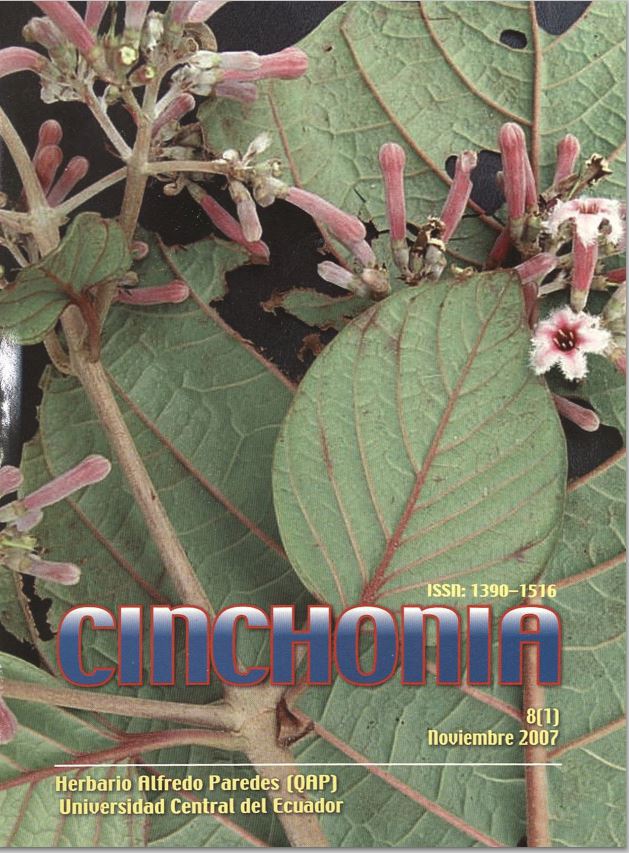LA FLORA EN CUATRO TIPOS DE BOSQUE, AÑANGU, PARQUE NACIONAL YASUNÍ, ECUADOR
Contenido principal del artículo
Resumen
Durante el mes de abril de los años 2004 y 2006, se realizó el trabajo de campo en Añangu. El estudio incluye ios bosques: aluvial, coluviai, moretal y colina, ubicados en la zona de vida bosque húmedo tropical. Se aplicó la metodología de transectos, cada set de mil metros, y las especies tomadas en cuenta > 2.5 cm de DAP. Se realizaron colecciones botánicas, las mismas que se encuentran depositadas en el herbario Alfredo Paredes. El análisis de la información, se realizó en base a los índices de diversidad de Simpson y similitud de Sorensen. En los cuatro tipos de bosque, el número de individuos varía entre 159 y 169, el número de especies entre 48 y 91, y en total suman 253. El índice de diversidad muestra valores interpretados como diversidad entre baja y media, mientras que la similitud se encuentra entre el 1.4% y el 24.4%. Las cuatro primeras especies más frecuentes, son: Rinorea apiculata, Aegiphila cuneata, Trichilia laxipaniculata, Iríartea deltoidea (aluvial), I. deltoidea, Bauhinia brachycalyx, R. apiculata, Acalypha cuneata (coluvial), Mauritia flexuosa, Mauritiella armata, Attalea butyracea, Zygia inaequalis (moretal) y Capparídastrum sola, Matisia malacocalyx, Perebea guianensis, Otoba glycycarpa (colina). El índice de diversidad muestra similar interpretación, en cambio el número de individuos, especies y la presencia de las especies más frecuentes son diferentes. Los bosques amazónicos, en pocos kilómetros de distancia muestran amplias diferencias, lo que sugiere que para preservar la biodiversidad, se necesita proteger suficientes extensiones de bosque

